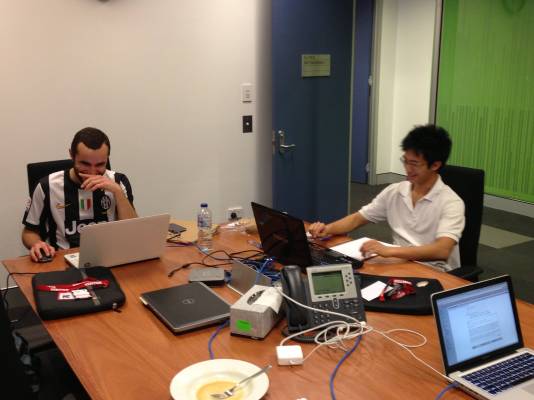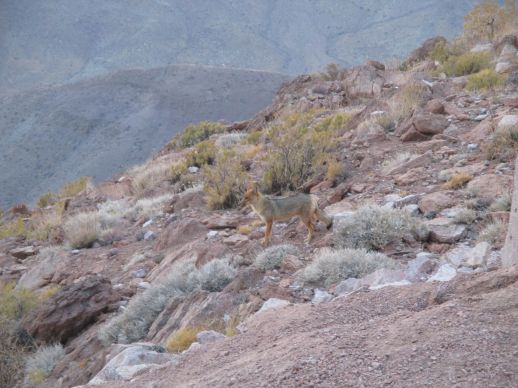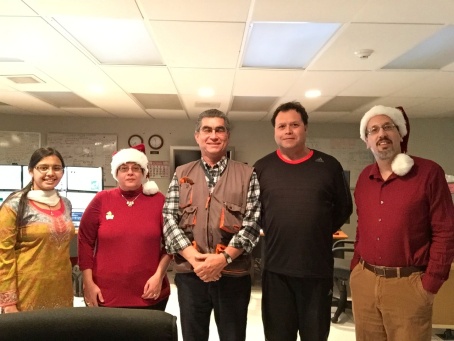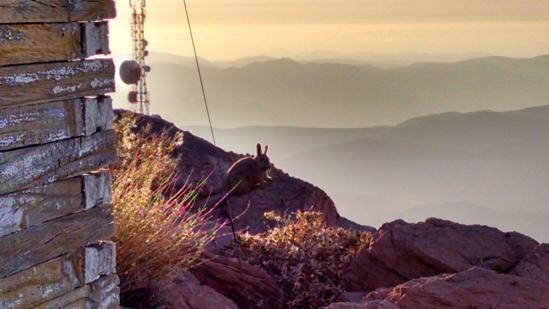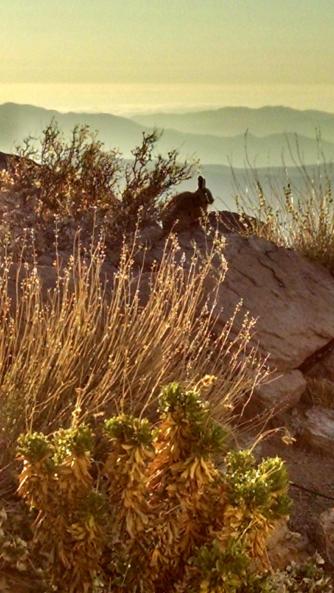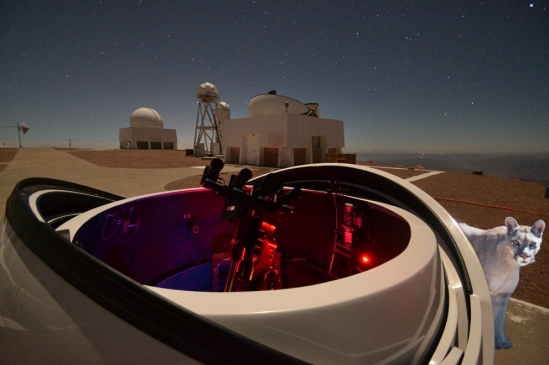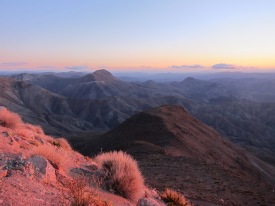
Teniente segundo, Jake Jenson. West Point. Graduado con honores. ¡Estamos aquí porque está buscando a los mejores entre los mejores de los mejores, señor! — Men in Black
Los mejores cielos proporcionan las mejores imágenes y nos dan las mejores pistas acerca de la expansión cósmica.
Si navegas entre los archivos de los detectives de la energía oscura, verás imágenes preciosas de galaxias, tomadas con la Cámara de la Energía Oscura (DECam). A pesar de su variedad en formas, colores y tamaños, todas estas galaxias tienen algo en común: se alejan de nuestra Vía Láctea a toda velocidad, alcanzando decenas, cientos de millones de kilómetros por hora. El Universo se expande, algo que sabemos desde hace más de 90 años.
Si pudiéramos registrar las velocidades de estas galaxias a lo largo del tiempo, ¿qué encontraríamos? ¿Sería la misma, estaría aumentando o quizás disminuyendo? Dado que la gravedad de la Vía Láctea las atrae, Isaac Newton nos hubiera dicho que la expansión se iría ralentizando con el tiempo, al igual que si tiramos una manzana al aire se va frenando (y al final cae) debido a la atracción gravitatoria de la Tierra. Pero Isaac se hubiera equivocado: las galaxias se están acelerando, en lugar de frenarse. Esto es un hecho que sabemos desde hace tan sólo 17 años. Los trescientos detectives del Dark Energy Survey (DES) se han embarcado en una misión de cinco años para entender qué está pasando. Durante la misma, realizarán la mayor exploración del cosmos jamás realizada.
Estos objetivos son espectaculares y de gran calado, pero en el fondo lo que hace el proyecto DES es hacer fotos. Y muchas. En una noche típica, los detectives de la energía oscura toman 250 fotos del cielo. Tras cinco años, tendremos más de 80000 fotos en nuestro álbum. Por cada instantánea, el obturador de la cámara se abre durante aproximadamente minuto y medio para acumular suficiente luz de las galaxias más lejanas. En cada imagen puede haber unas 80000 galaxias. Cuando las juntemos todas, y teniendo en cuenta que fotografiaremos cada zona del cielo unas cincuenta veces, tendremos unos 200 millones de galaxias.
Una de las maneras con las que podremos aprender más sobre la energía oscura, la misteriosa causa de la aceleración, es midiendo con gran precisión las formas de esos 200 millones de galaxias y comparándolas entre sí. Imagínate que hiciéramos fotos a 200 millones de personas para estudiar la diversidad de la especie humana (lo que sería una foto por cada 35 personas). Para tener la mejor información posible, nos gustaría tener a un fotógrafo profesional tomando las fotos en buenas condiciones y lo más parecidas posibles entre sí: buena iluminación, enfoque, que no se muevan ni la cámara ni el sujeto fotografiado durante la toma, etc. Pero es inevitable que unas vayan a salir mejor que otras, simplemente por las circunstancias en las que se han tomado, que varíen de un momento a otro. En algunas, el sujeto estará algo borroso, en otras, quizás la iluminación sea excesiva o insuficiente.
En el Dark Energy Survey, intentamos conseguir las mejores imágenes posibles de estos 200 millones de galaxias. Como fotógrafos profesionales del cielo nocturno (es decir, astrónomos), usamos el mejor instrumental disponible: la Cámara de la Energía Oscura DECam, que construimos nosotros mismos. Es una cámara de 570 megapíxeles, con cinco lentes enormes. Consta de un sofisticado sistema de auto-enfoque, para conseguir las imágenes más nítidas posibles.
En cambio no nos hace falta flash, ya que las galaxias lucen con la luz de millones de soles.
Pero la naturaleza no siempre coopera a la hora de conseguir buenas fotografías, al igual que a veces los sujetos fotografiados tampoco. La Cámara de la Energía Oscura está montada en el telescopio Blanco, localizado en Cerro Tololo en los Andes chilenos. Este emplazamiento proporciona generalmente noches muy claras, pero de vez en cuando las nubes hacen acto de presencia. Además, la turbulencia de la atmósfera distorsiona las imágenes de estrellas y galaxias (por eso vemos las estrellas parpadear), incluso con un buen enfoque. La cámara toma sus fotos con la luz reflejada en un enorme espejo de cuatro metros de diámetro y 15 toneladas. Si un frente de aire frío enfría la cúpula del telescopio, el espejo irradia calor hacia dicha cúpula, lo que perjudica la calidad de la imagen. Las mejores imágenes son las tomadas directamente hacia arriba, verticalmente. Si tenemos que inclinar un poco el telescopio, la luz de las galaxias debe atravesar una fracción de atmósfera mayor. Pero queremos observar buena parte del Universo, con lo que no nos podemos conformar con dejar el telescopio apuntando hacia arriba únicamente. También el viento puede colarse y mover ligeramente la estructura del telescopio, una vez más enturbiando nuestras fotos. Y además, mientras tanto, la Tierra sigue girando, y el gigantesco telescopio debe compensar suavemente el movimiento del cielo que es consecuencia de esta rotación (o si no, lo adivinaste, se enturbiará la imagen).
Por esta y muchas otras razones, la calidad de las imágenes de DES varía. Algunas noches, una combinación de circunstancias confluyen en unas imágenes estupendas. Otras, en cambio, nos dan fotos algo más borrosas de lo que quisiéramos, haciendo más difícil medir la forma de las galaxias. Si la foto es demasiado mala, no la incluimos en nuestro álbum. Ya volveremos otra noche a ese punto del cielo a tomar otra mejor. Hasta ahora, un 80% de las fotos han tenido la calidad suficiente para engrosar nuestra colección.
Durante la mayor parte de nuestra temporada de observación, tenemos a tres detectives operando la cámara. Cada uno de ellos permanece allí durante una semana, y en el transcurso de una temporada, unos 50 detectives distintos hacen turnos en la montaña. Durante la noche del 27 de enero de 2015, me encontraba realizando mi turno en el telescopio, junto a mis compañeros detectivescos Yuanyuan Zhang de la Universidad de Michigan y Andrew Nadolski, de la Universidad de Illinois en Urbana-Champaign. Esa noche, Andrew estaba manejando la cámara, yo me encontraba verificando la calidad de las imágenes, mientras que Yuanyuan hacía de jefa de observaciones.
Las condiciones de esa noche eran extraordinarias. Aunque había algo de humedad, la atmósfera era extremadamente estable. Tomábamos imágenes usando filtros que dejaban pasar únicamente la luz roja o infrarroja. La razón de esto es porque, al estar la luna en el cielo esa noche y dado que su luz es muy “azul”, con estos filtros podemos bloquear su brillo, de manera que podemos observar las galaxias rojas contra el oscuro fondo nocturno. En la famosa foto “Monolith, the Face of the Half Dome”, tomada en el Parque Nacional de Yosemite, Ansel Adams utiliza un filtro rojo para oscurecer el cielo azul diurno, creando un efecto espectacular.
A las 00:28 hora local, tomamos la foto número 403841, usando un filtro en el infrarrojo cercano llamado “banda z”. Esta banda del espectro electromagnético es tan roja, que se encuentra más allá del rango perceptible por el ojo humano. Pero las cámaras digitales, y en particular nuestra DECam, son muy sensibles a esta luz infrarroja. Los ordenadores en el telescopio analizan cada imagen inmediatamente después de tomarla y muestran los resultados en un conjunto de monitores, de manera que podemos determinar si pueden pasar a formar parte de nuestro álbum cósmico. Cuando los monitores mostraron la foto 403841, la pantalla indicaba que estábamos ante una extraordinaria nitidez de imagen. Un análisis más detallado mostró que, de las 35000 fotos que habíamos tomado hasta entonces durante dos años, sin duda era la más nítida.
De hecho era tan nítida, que la luz de cada estrella se dispersaba tan sólo 0.6 segundos de arco (0.00017 grados). Para que os hagáis una idea, ése es el tamaño aparente de un cráter de 1 km de diámetro en la luna, visto desde la Tierra. O el tamaño de un pelo a 30 metros de distancia.
Arriba, mostramos una pequeña sección de esta foto, usando colores falso, con una gran galaxia espiral más un conjunto numeroso de galaxias más pequeñas y débiles, junto con unas pocas estrellas de nuestra propia Vía Láctea. La luz de la estrella rodeada con un círculo rojo se ve dispersada en tan sólo 0.6 segundos de arco. Aunque no es tan bonita como otras imágenes que habréis visto en estos archivos, lo que es cierto es que ésta se parece más a una imagen sin procesar, tal cual sale de la cámara. Estas imágenes “en bruto” se envían para su procesado al National Center for Supercomputing Applications en Urbana-Champaign en Estados Unidos, para ser procesadas y prepadas para el análisis científico por parte de nuestros detectives.
En DES, tenemos un listado de récords, que incluye las imágenes más nítidas que se han tomado en cada uno de los cinco filtros. Nuestra amiga 403841 aparece orgullosa en la lista: la mejor de las mejores. Pero lo mejor de los récords es que están ahí para ser batidos.
Det. Josh Frieman [Fermilab y Universidad de Chicago]
NB: echa un vistazo al Reddit AMA del viernes 30, donde discutimos las pruebas y evidencias para la materia oscura y la energía oscura (https://www.reddit.com/r/science/comments/2u6yxp/science_ama_series_im_dr_josh_frieman_director_of/).


